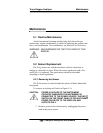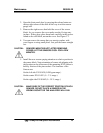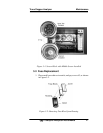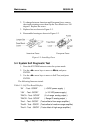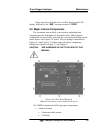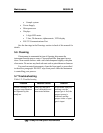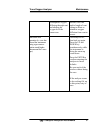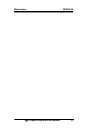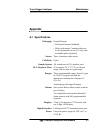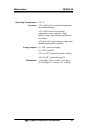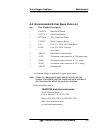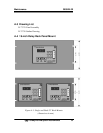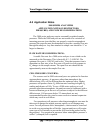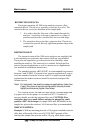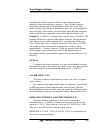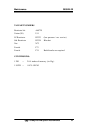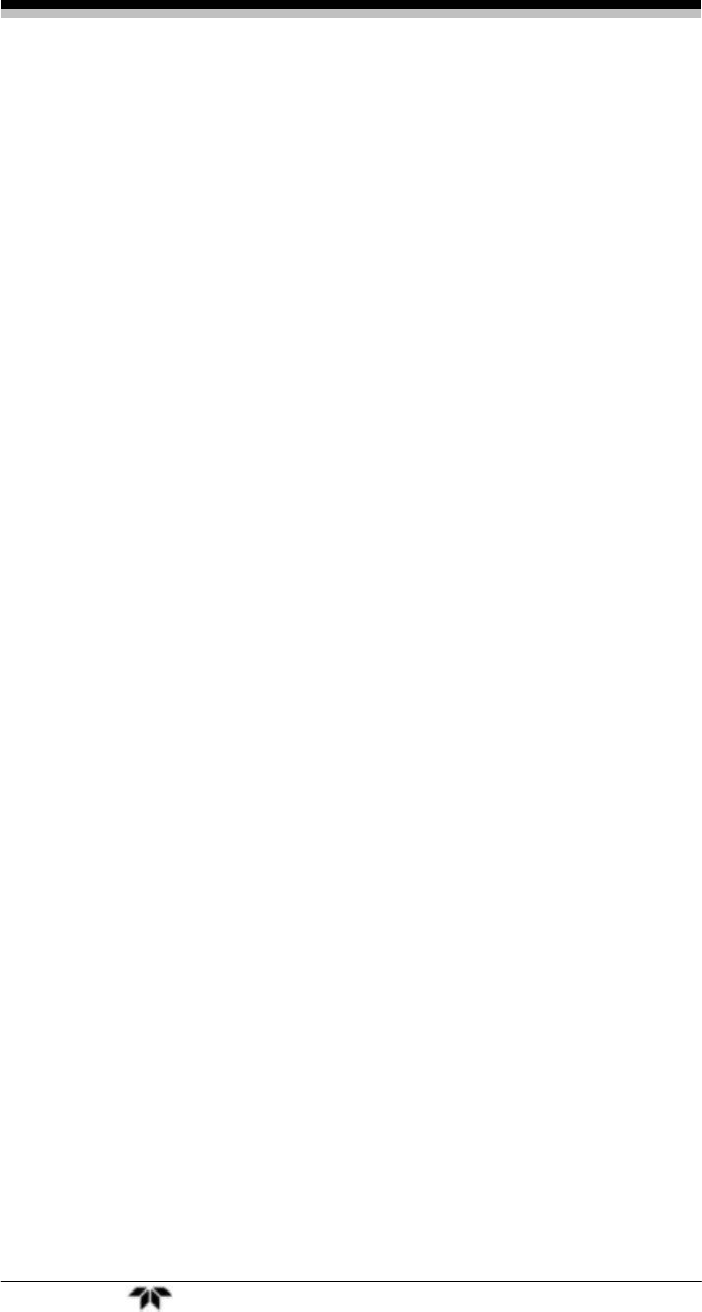
Trace Oxygen Analyzer Maintenance
Teledyne Analytical Instruments 59
(including the cell) the pressure will be at atmospheric pressure
(analyzer vented to atmospheric pressure). Note, all other pressure
drops in the sample path are insignificant at these flow rates. This
insures that the cell operates at atmospheric pressure. At very high flow
rates (off scale of flow-meter), pressure drops other than the restriction
device could become significant, and result in pressurizing the cell.
Example 2: A 3000TA is configured for vacuum service as follows. The
unmarked restrictor is placed in the sample vent port. The downstream
end of the restrictor is then connected to a vacuum pump and by-pass
valve. The by-pass valve is adjusted to provide a flow rate of 1 SLPM.
The sample pressure between the pump and the restrictor will be
approximately -7 inches of mercury, while the pressure in the balance
of the sample system including the cell will be approximately at
atmospheric pressure (provided the sample flow into the analyzer is not
blocked).
BY-PASS:
To improve the system response, a by-pass can be added to increase
the sample flow rate to the analyzer by a factor of ten. A by-pass typically
provides a sample flow path around the analyzer of 2 - 18 SCFH.
CALIBRATION GAS:
3000 series analyzer requirements for units with Auto-Cal options
are as follows:
The customer must supply control valves (or restrictors) for any SPAN
or ZERO gas source which is attached to the Auto-Cal ports. The valve
should be adjusted to the same flow rate as the sample gas. When restrictors
are used, the gas pressure must be adjusted to achieve the proper flow rate.
OPERATION WITHOUT A RESTRICTOR DEVICE:
Operation without a restrictor device is not recommend as
mentioned above. A 3000TA without any flow restrictor device was
tested on 11-19-97. This results in a flow rate of 2.4 SLPM @ 1 PSIG.
This is a cv of 0.023 for the standard sample system.
REFERENCE: FLOW_1.XLS & FLOW_2.XLS for information on
flow rates at various pressures.



